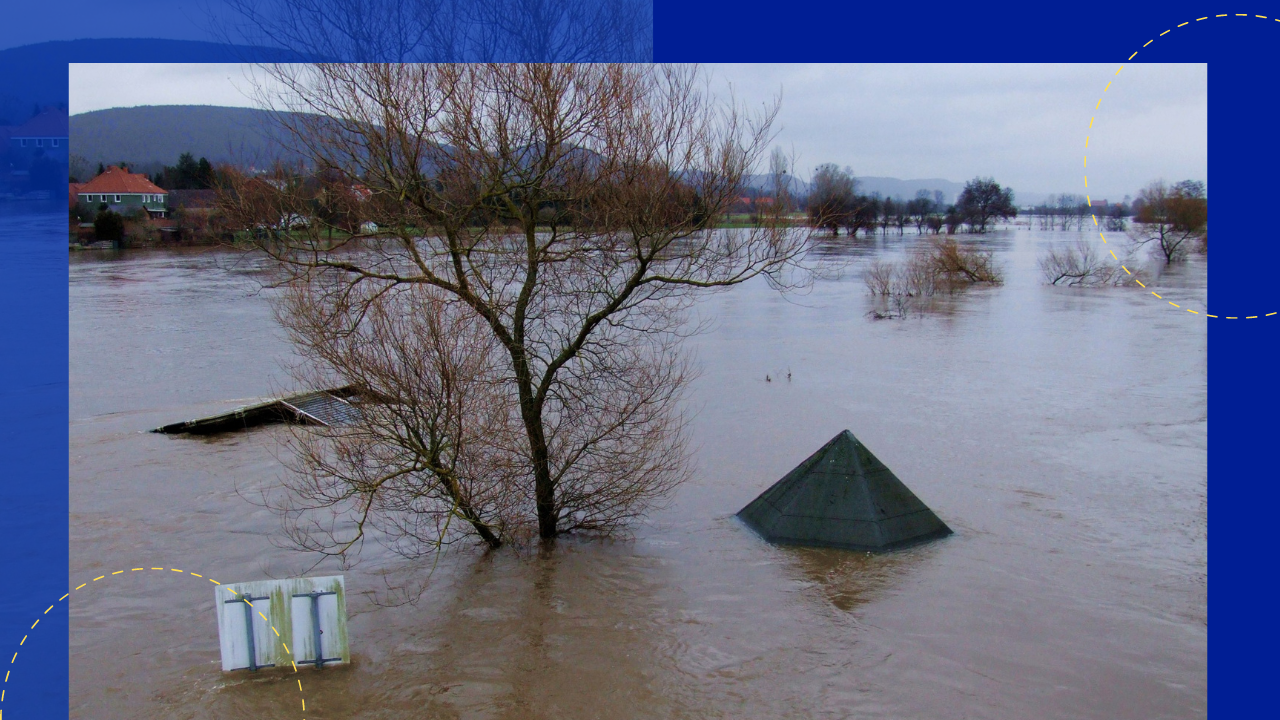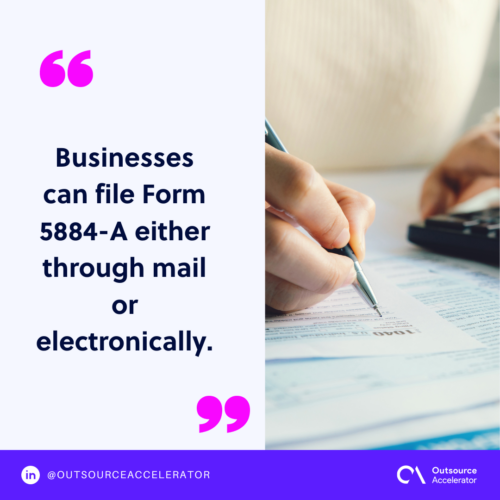Form 5884-A and how to file it

Economic and business disasters are an undeniable reality. Even enterprises with robust foundations and adequate funds can’t ensure their sustained strength in the face of adversity.
When disasters strike, the potential for significant employee turnover looms, profoundly affecting overall business functions—preparedness is critical for businesses of every scale.
Luckily, Form 5884-A, provided by the IRS, is a cornerstone for businesses and employees, giving vital financial relief during crises.
Grasping its importance, identifying the eligible entities, and comprehending the filing procedures are fundamental steps in optimizing its advantages.
What is Form 5884-A?
See Form 5884-A (Rev. March 2021)
Form 5884-A operates as a crucial instrument within the IRS framework, often overshadowed by more prominent forms, yet its impact is significant.
Its core purpose is to incentivize businesses to retain their workforce during turbulent times by offering financial relief.
By offsetting a portion of wages paid to retained employees, Form 5884-A aids businesses in managing their financial strains. It also fosters a sense of stability and job security among the employees.

When to file Form 5884-A?
Filing timelines for Form 5884-A depend on the specific disaster or emergency. Generally, it should be filed within the allocated time frame provided by the IRS following the disaster declaration.
Importance of Form 5884-A
Form 5884-A is a testament to the symbiotic relationship between business sustainability and employee welfare. This acknowledges that during crises, resilience hinges on mutual support and retention.
Here are the reasons that show how vital Form 5884-A is:
Provides financial relief to employees
Form 5884-A incentivizes businesses to retain their employees during challenging times. It helps maintain stable income streams for workers, preventing layoffs and fostering financial security.
Assists businesses impacted by disasters
During disasters or emergencies, businesses often face financial strain. Form 5884-A acts as a buffer, providing a tax credit that eases the burden and enabling companies to navigate challenging times more quickly.
Fosters job security for workers
The form encourages businesses to retain their workforce. It helps ensure job security and employee stability, even during turbulent periods.
Aids firms in retaining employees
Businesses that qualify for this credit can offset a portion of wages paid to retained employees, making it financially feasible to maintain staff during difficult periods.
However, it’s important to note that the amount businesses can offset through Form 5884-A varies. The amount is also calculated based on eligible wages, meaning the credit doesn’t cover the entire wage but rather a portion of it.
How to file Form 5884-A
Let’s now explore how to correctly file this form:
Step 1: Gather the necessary information
Begin by assembling essential details crucial for Form 5884-A. This includes comprehensive information related to the business, including the following:
- Type of business
- Financial records
- Impact of the disaster or emergency on its operations
Specifically, document the extent of the disaster’s influence on the business’s functioning, such as damage incurred and financial losses sustained.
You should also gather specifics about employee retention efforts undertaken during this period, like the number of retained employees and their roles within the organization.
Step 2: Obtain Form 5884-A
Accessing Form 5884-A is relatively straightforward. It can be acquired directly from the official IRS website, where it’s usually available in downloadable format.
Alternatively, authorized tax advisors or professionals specializing in disaster-related tax credits can also provide this form.

Step 3: Complete the form.
Once you possess Form 5884-A, fill it out meticulously and accurately. Carefully adhere to the guidelines in the form’s instructions, ensuring all required sections are accurately completed.
You must complete some crucial parts of the form:
Part I: General Information
- Enter your employer identification number (EIN) and business information.
- Specify the disaster and the date the president declared the area a disaster zone.
Part II: Employee Retention Credit
- Calculate the eligible wages for each eligible employee during the period affected by the disaster.
- Compute the employee retention credit based on the eligible wages and the applicable percentage.
Part III: Qualified Disaster Zone Employment Credit
- Determine the qualified disaster zone employment credit.
Step 4: Attach supporting documents
After completing the form, it’s critical to reinforce the provided information with relevant documentation. This includes essential records like payroll statements.
Additionally, businesses should furnish evidence showcasing the impact of the disaster on their operations. This may include:
- Documentation outlining damage assessments
- Business interruptions
- Other tangible effects incurred due to the disaster
Step 5: File the Form 5884-A
Businesses can file Form 5884-A either through mail or electronically. Adhere strictly to the guidelines provided by the IRS.
Following these guidelines is essential to ensure the application reaches the IRS office in the prescribed format and on time.

Step 6: Seek professional assistance if needed
When the application process seems complex, seeking guidance from tax professionals or advisors is highly advisable.
Tax experts possess the knowledge and expertise to navigate intricate tax procedures, offering insights and ensuring adherence to the IRS requirements.
Furthermore, consulting professionals help mitigate errors and increase the likelihood of a successful application for the tax credit.







 Independent
Independent




